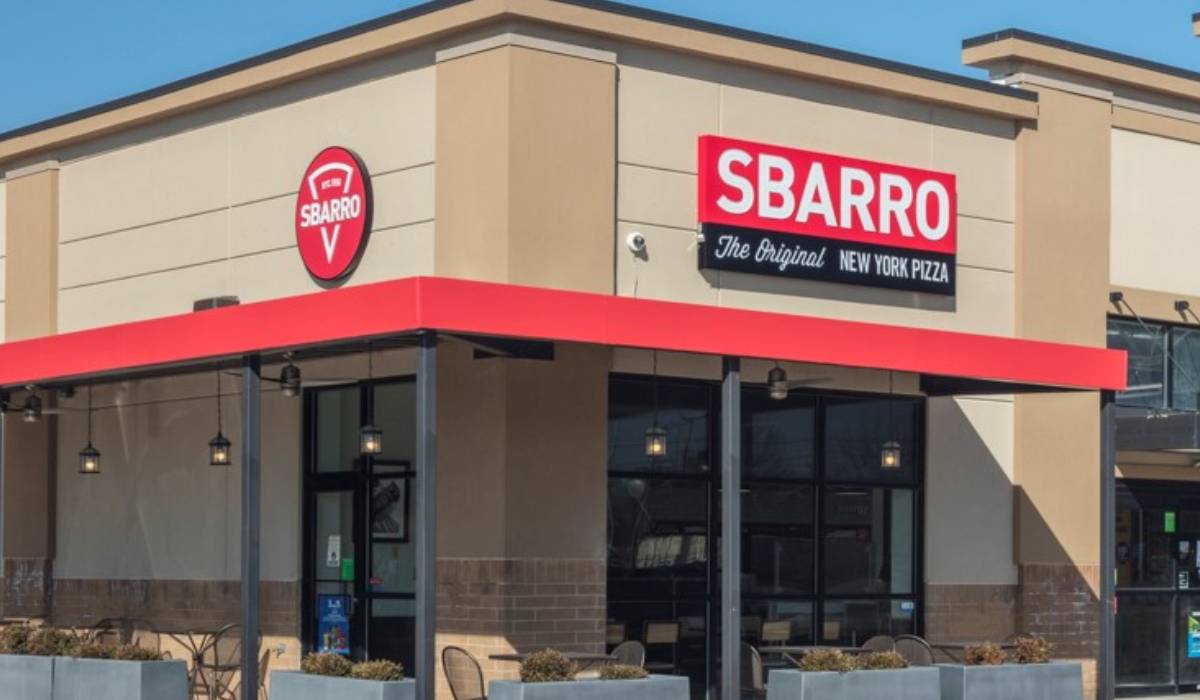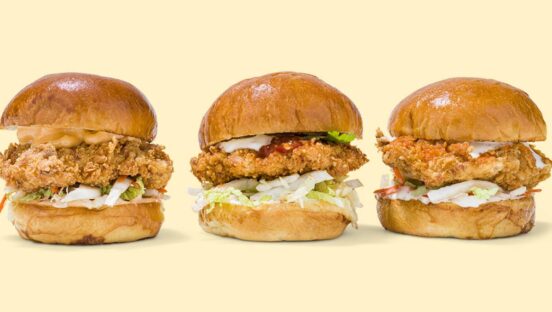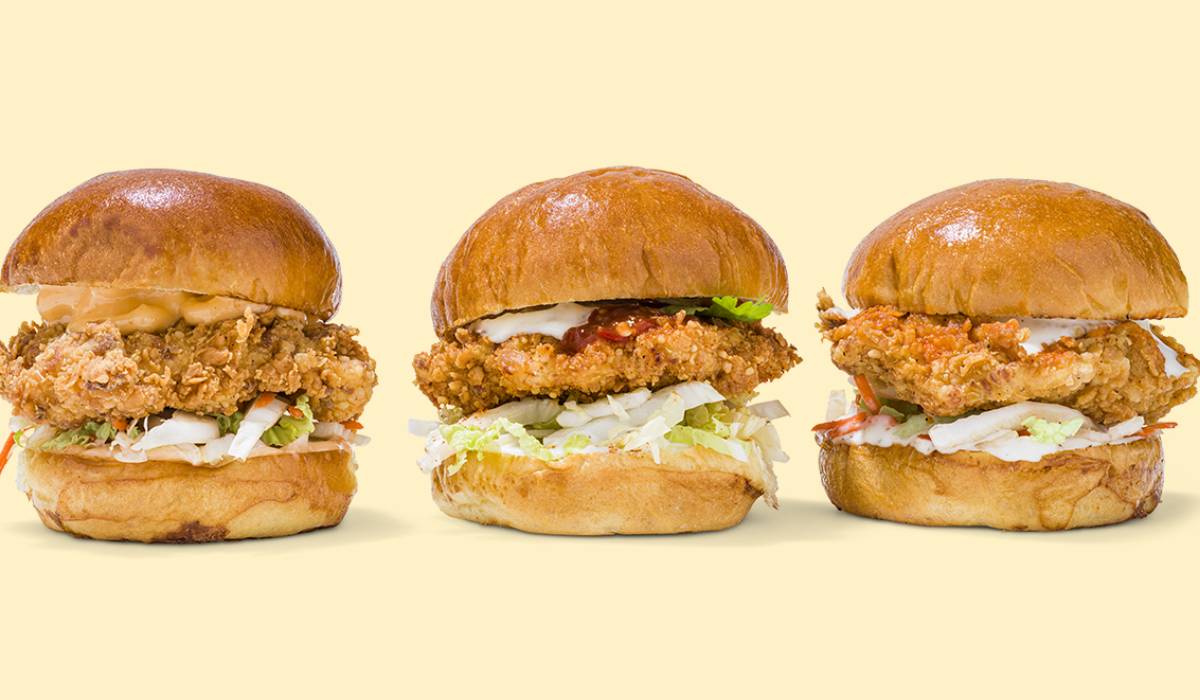A word Pace Webb keeps returning to is “chemistry.” Daddy’s Chicken Shack tells a startup story that’s not unfamiliar. The brand had a product guests craved and then fit the dream into an improbable box. In this case, a 700-square-foot space in Pasadena, California, Webb and her husband and business partner, Chris Georgalas, discovered on Craigslist. There was no bathroom, foot traffic, seating, and a red curb fronting the store (so no parking). Webb says Daddy’s could count the number of customers “on our hands and feet in a day.”
This was November 2018. Four years later to the month, Daddy’s signed its seventh regional development deal and second in Texas. Not in the brand’s history, but in just 2022 alone. Along with the inking of eight franchise agreements across California, Oregon, Texas, Colorado, Arizona, Georgia, and Florida, the brand today boasts a total of 120 units in development.
MORE: Check out the entire 40/40 List of America’s Hottest Startup Fast Casuals
There’s one location open and running—a 2,400-square-foot Houston model that portends future development. But two, in Scottsdale and Denver, are slated to land in Q1. The Pasadena test kitchen is no longer open to the public.
While there’s a lengthy road ahead, Daddy’s is off to a rare spurt. “It just all feels right,” Webb says. “And it doesn’t mean the path to success is at all linear, but we’re definitely in a very good place, and with great chemistry.”
What Webb is referencing is that intangible piece that often splits upstarts from those that make it. For Daddy’s, it clicked through the center of COVID-19. Webb maintained a fine-dining catering business in Daddy’s early days. When the pandemic hit, though, one company moved downward and the other rocketed: Daddy’s watched sales leap 200 percent.
Georgalas says COVID forced Daddy’s, like hosts of brands nationwide, to make serious adjustments and gather intel as it tried to figure out how to reach people. There came a point where drivers pulled up and got in line, and guests piled up outside. Georgalas had never worked in a restaurant, so he went to the front of house and tried to meet every customer who walked in. Naturally, Daddy’s didn’t staff for a 200 percent increase, which kept him busy. Georgalas handed water bottles and cookies to drivers and diners.
As regulations relaxed, Daddy’s figured out how to schedule shifts and leverage tech, which was an area the brand got ahead of from the outset; it had to, given the lack of foot traffic and parking. Daddy’s became one of the early customers of Ordermark (now Nextbite)—an online ordering solution that offers integration of third-party delivery providers—and dipped into facial recognition kiosks and autonomous delivery. By the end of 2018, Daddy’s was on 11 delivery apps and offered native online ordering.
Essentially, the fast casual navigated COVID with an omnichannel system before the couple (or many other people, for that matter) were even sure what that term defined.
“We were able to take a look at our data and look at our numbers and say, this is what we need here and adjust and once that dust settled, that’s when we realized,” Georgalas says. “We came up for air and we’re like, oh, I think we have something here.”
[image source_ID=”134258″]
The pipeline is growing rapidly for Daddy’s Chicken Shack, well into the triple-digits.
Georgalas reached out to old contacts and a close friend. Eventually, Daddy’s crossed paths with Dr. Ben Litalien, founder of FranchiseWell, an agency that consults with mega groups like UPS and IKEA. The partnership evolved into an investment from Dave Liniger, the co-founder of global real estate franchise RE/MAX. He chose Daddy’s from 200 potential candidates. “Hearing the success stories, hearing the challenges, [Dave] telling us that he’s made every mistake in the book in the last 50 years, but hearing what that’s yielded as far as the success that people were set up for from inside the business and outside, is really what was attractive to us,” Georgalas says.
Daddy’s then set out to design its Houston flagship, a standalone the company says shows potential franchisees an example of the “biggest, baddest thing you could have.” Daddy’s expects to spread mainly as inline or endcap locations, with about 25 percent or so as standalones. “When I’m in the space, it has the gravitas of a legacy brand,” Webb says.
What can’t be lost, however, is why Georgalas pushed his chips in on day one. Webb’s Los Angeles-based catering shop, Taste of Pace, was asked to make sliders and tacos at an event back in 2013 (they weren’t on the menu). She developed a fried chicken sandwich with sriracha mayo, Thai-style slaw, buttermilk fried chicken, and a brioche bun. The food drew a crowd and even the praise of actress and singer Mandy Moore. The following day, Webb called her dad and flippantly mentioned she had a retirement plan. He’d be able to hang in the Venice Pier, wear Hawaiian shirts, and fry chicken. That’s where the name, “Daddy’s,” was born.
Webb’s father, an artist and graphic designer, would actually, in time, craft the Houston store’s interior alongside Harrison, a global consultancy company that’s assisted with development of several familiar restaurant aesthetics, including Fogo de Chão and Maggiano’s.
It’s an authentic-looking shack that mismatches elements of a house, like windows of random sizes, and a door hanging from the dining room ceiling. Think of it as American South with Japanese minimalism as a backbone.
Returning to the food (and Georgalas’ initial inspiration), Webb fine-tuned her sandwich over the years before Georgalas tried it in 2015. He believed Webb found her Shake Shack.
“I told her you should do something with this and she looked at me like I had five heads and she said, ‘well, you should do this with me,’” he says.

At the start of 2018, Webb and Georgalas opened Daddy’s at Smorgasburg food market. The weekly event attracted 4,000 customers when the restaurant joined, but saw upward of 13,000 at some points. Hundreds of sandwiches were sold each day and later that year, Georgalas tracked down the Pasadena space. They signed a lease and moved in 18 days later.
Webb notes, although she didn’t recognize it then, she had been training to be a CEO for years. “A chef’s career is very similar in a lot of ways,” she says. “You’re type A, a little high strung, have to be a great leader, have a product to get out on time, on budget, at a certain temperature. There were so many similarities that I didn’t even know I had been cultivating.”
But importantly, in addition to the sandwich, Georgalas believed in Webb. His first role, he says, was to support her and find ways to get the message out. He was an institution position trader at Deutsche Bank and the hospitality sector before they met, with no inkling to get in the restaurant game. “It was about supporting her, supporting a woman as a founder of a business called Daddy’s, which is really cool. And the magic is really starting to happen,” he says.
Why the franchising route came down to Liniger. They jumped in together. Liniger joined as an investor and later sought out his own regional development agreement. He was the first to ignite a chain of regional development deals, securing 20 units split evenly between Arizona and Colorado. A year after starting its franchising journey, Daddy’s hosted a regional developer conference in Las Vegas.
The small menu helped streamline operations and Daddy’s tech chops created a system where the brand could track and monitor performance. Daddy’s selection of chicken sandwiches is best described as a confluence of Southeast Asian, American South, and Japanese culture, partly an ode to Georgalas, who is half-Japanese. For instance, the Big Daddy sandwich comprises napa slaw and sriracha mayo, while the Spicy Daddy features sambal, cilantro, and ginger mayo. For dessert, the restaurant offers salted miso chocolate chip cookies, baked fresh each day.
The regional developer approach is a hybrid of sorts; a “train the trainer” system that enables quick growth if executed correctly. Regional developers buy the rights to a territory of a million people that matches the demographic of a Daddy’s customer. They’re then required to open a store (or more). After, they sub-franchise the other nine units, almost like a mini franchisor. The idea being they get a flagship location certified as a training store and lay the blueprint for regional operators. This way, training is hyper local and franchisees aren’t reliant on corporate for every level of support.
Getting these developing units open is on the horizon for Daddy’s, which has forced Georgalas and Webb to undergo a crash course on franchising and expansion: to make sure real estate selection, tech, marketing, and using data to attract and reengage guests is tight and ready to replicate. “And then culture. I think the harder part of franchising—yes, very systems and process focused. But how do you scale a culture?” Webb says. “Because one place can have a delicious chicken sandwich, but if they don’t have a good hospitality experience that’s just really going to hurt, especially for an emerging brand.”
Georgalas calls this, “scaling a feeling.” One element Daddy’s has going in its favor is how the chain took root. The ability to deliver digital hospitality—a target brands across the lexicon are working back against these days—was something Daddy’s developed from the ground floor. It started with a blank canvass in one of the biggest paradigm shifts in sector history.

“It’s exciting and we’re up for it,” Georgalas says. “And again, we have a responsibility and we’re going to give every ounce of effort we have to set people up for success, both internally and our team. Franchisees and developers, just across the board.”
Daddy’s will focus on regional growth so it can quality control and wield purchasing power. Once it establishes an area, the brand will refocus before heading elsewhere. “I like to see other people win,” Webb says. “I know I can make an awesome piece of food. I know I can make a great fried chicken sandwich. I know I can run a restaurant if I’m there five, six days a week. I know all that. I don’t need to prove that anymore. I want to make opportunities for other people—that’s what I’m super passionate about.”
Speaking of chemistry, being married and also being business partners isn’t for everybody, Webb laughs. “I’ll say that off the bat,” she says. “But it’s definitely for us.”
Before they started Daddy’s, Webb says she was given a piece of advice—stay in your respective lanes, define roles and responsibilities, and make sure one person doesn’t feel like the boss of the other. Technically, Webb is the CEO and Georgalas president. “It just really works. We’ve also got a very different skillset and the way we approach problem solving, thinking, is also very different and so it’s very complementary,” she says. Webb focuses on ops and culinary, while Georgalas oversees marketing and tech. He’s more of a macro thinker whereas Pace dives in.
Again, however, the nuances aren’t as vital as the high-level picture, which is something Daddy’s continues to keep in sight. “You just go through incredible highs and experiences and then you have incredible challenges at times,” Georgalas says. “But we find that we’re saying during both of those scenarios that we get to do this together, and it doesn’t matter.”
Webb was pregnant when Daddy’s debuted. They now have two daughters and Georgalas jokes Webb runs the household like she does the restaurant. “Parts to reorder, a toy list,” Webb quips.
But throughout it all, Georgalas says, Daddy’s chemistry has held because the goal has stayed unshakable—develop a restaurant that empowers others to excel. “That’s what makes us feel really good about what we’re doing,” Georgalas says.





